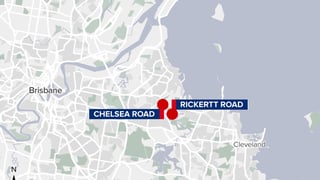
The Holden Commodore is a full-size car that was sold by Holden from 1978 to 2020. It was manufactured from 1978 to 2017 in Australia and from 1979 to 1990 in New Zealand, with production of the locally manufactured versions in Australia ending on 20 October 2017. Between 2018 and 2020, a rebadged Opel Insignia, built in Germany, was sold in Australia as the Holden Commodore (ZB). All sales of new Commodores ended in 2020, coinciding with the discontinuation of the Holden marque and nameplate entirely. From 1978, the Commodore replaced the long-serving Holden Kingswood and Holden Premier: mid-sized executive cars developed in Australia. Initially, the Commodore was based on the Opel Commodore (C), a smaller, contemporary rear wheel drive (RWD) platform designed by General Motors' German subsidiary. This was redesigned by Holden, to suit the demands of the Australian market, road conditions and manufacturing. Subsequent series of Holden Commodore became larger, and were also influenced by the Opel Senator and Opel Omega. The fourth generation Commodore, fully developed and manufactured in Australia, was based on the Holden developed Zeta platform. Initially introduced as a single sedan body style, the range expanded in 1979 to include a station wagon. From 1984, Holden began branding the flagship model as Holden Calais, with the Commodore Berlina introduced in 1984 gaining independent Holden Berlina nomenclature in 1988. Long-wheelbase Statesman/Caprice derivatives and Commodore utility body variants followed in 1990. The third generation architecture spawned the most body styles, with a new Holden utility launched in 2000 (now officially as the Holden Ute), reborn Monaro coupé in 2001, four-door Holden Crewman utility and all-wheel drive (AWD) Holden Adventra crossover in 2003. Holden Special Vehicles (HSV) in 1987 began official modification of high performance variants of the Commodore and its derivatives, under its own nameplate. Rivalry came predominantly from the Ford Falcon—also locally built. Prior to the second generation Commodore of 1988, the Holden was positioned a full class below the full-size Falcon. To varying degrees, competition also came from mid-size offerings from Toyota Australia as well as Chrysler Australia, which morphed into Mitsubishi Motors Australia. Moreover, between 1989 and 1997, Australian federal government policy saw the launch of the Toyota Lexcen, which was a rebadged version of the second generation Commodore. With the introduction of the third generation in 1997, Holden implemented its largest export programs involving Commodore and its derivatives. In the Middle East, South Africa and Brazil, the Commodore sold as a Chevrolet. High-performance export versions followed in North America, sold as Pontiac and later Chevrolet. HSV also exported to the United Kingdom as Vauxhall, in the Middle East as Chevrolet Special Vehicles (CSV) and in New Zealand and Singapore as HSV. In December 2013, Holden announced that it would cease its local production by the end of October 2017 committing, however, to use the long-standing Commodore nameplate on its fifth-generation fully imported replacement, moving to a front-wheel drive (FWD)/all-wheel drive (AWD) platform. On 10 December 2019, Holden announced that the Commodore nameplate would be discontinued in 2020, in what is, according to Holden's interim chairman and managing director Kristian Aquilina, "decisive action to ensure a sharp focus on the largest and most buoyant market segments", focusing on their SUV and Ute range, which had accounted for over 76% of their lineup during 2019. This marks the end of the Commodore nameplates' 41 years." On 17 February 2020, General Motors announced that the Holden marque in its entirety would be retired from sale in Australia and New Zealand by 2021. From Wikipedia

Justice Tom Sullivan handed down the prison term after hearing how the crash shattered the Christoffersen family’s lives



